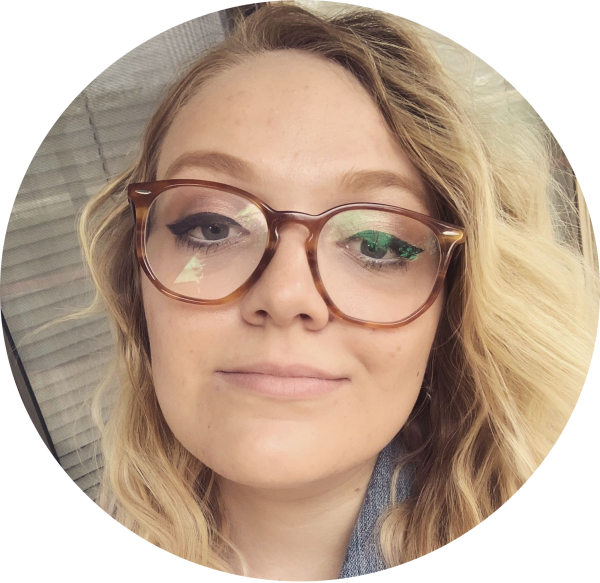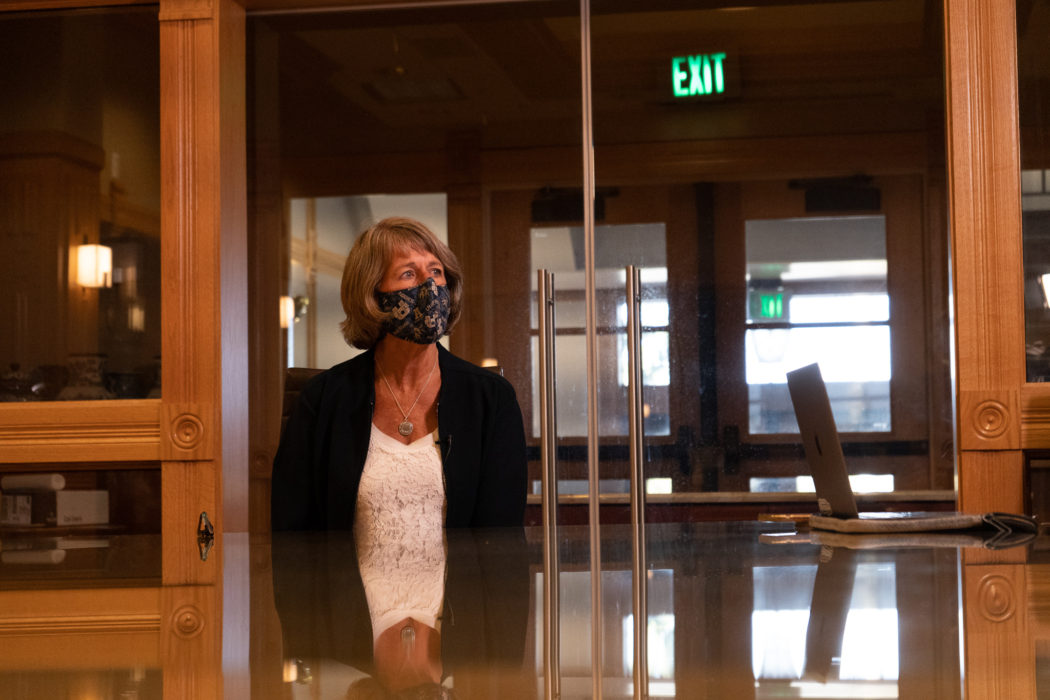‘Utah State is doing a good job’ on COVID response, says President Cockett
It’s been over a month since Utah State University started fall semester and the number of coronavirus cases has risen to 487 as of Friday. This puts the total number of cases at 572 since March.
The university has been hard at work to combat the virus, creating personal COVID Care Kits for each student and setting up a COVID Care Team to take care of students self-isolating or quarantining. Student Affairs has encouraged students to sign a protection pledge. Signs have been placed around campus to remind students to social distance and wear their masks inside buildings.
President Noelle Cockett has been hard at work as well to make sure guidelines are being followed.
“This has been some of the most difficult administrative times I’ve ever had,” Cockett said. “We have a saying that we’re building the plane while we’re flying it, meaning that I don’t have anything to fall back on past experience or past processes, and I can’t always see what the next thing that arises will be. It’s just made me appreciate our people, our students, our faculty and staff, because we’re all in this wanting to do what’s best, and best for each other, best for the university, best of what it will take to keep us going. So there’s an incredible pride that I have. I believe we’re going to make it.”
Cockett said it was difficult to see the influx of cases in week one after everyone had returned. Even though cases continue to rise, she is proud of what the university and its students have accomplished after just one month. Several universities have been forced to shut down due to the high amount of COVID cases. The University of Utah announced it would be suspending in-person classes for two weeks after high clusters of COVID cases were found. On Sept. 27, the U. extended the “online-only” period to stop the spread during the upcoming vice presidential debate.
USU would need to get much worse for a complete shutdown. It isn’t a matter of cases the administration would take into account, but rather how many people the university can support in isolation or quarantine.
“We want to make sure that [quarantined students] have access to their classes,” Cockett said. “If they’re in a residence hall, they are getting the services they need there, such as food, self-isolation locations, et cetera. We refer to it as case management. It’s not the number of cases we would get, it’s the capacity of the university to help those that need the help.”
USU has been seeing a steady increase in cases — about three to five a day. The reason the numbers are so low is because of the “precautions and preventive measures” USU students, staff and faculty have been willing to take.
There has been a handful of students refusing to abide by these “precautions and preventive measures,” not just at Utah State, but all over the United States. Brigham Young University made headlines for expelling students who refused to follow COVID guidelines while other universities such as Bates College in Lewiston, Maine made their students sign liability waivers. Governor Andrew Cuomo said universities in New York would be forced to go remote if 5% of their population tested positive.
“We have about 2% of our people who are just really not getting the masks,” Cockett said. “When I compare that to other universities, that number is much smaller than where we’re seeing large outbreaks. Those spikes, those areas of infection are happening. On-campus is what we can control. Off-campus is where it really gets worrisome. I think maybe a few things have happened that have made our people aware of problems. As far as I can tell, they’re being very relatively responsible to control those things and the preventative practice that matters most there.”
According to Cockett, you can’t expect people to wear masks at a large party or carry hand sanitizer around. All administration can do is ask students who have been exposed or start experiencing symptoms to take the COVID questionnaire, self-isolate or quarantine. These are the actions that stop the infection from spreading.
Students have been quick to point out photos of members of intramural sports teams who have been together in large groups. Rumors have also gone around about athletes who have been attending large parties after testing positive for COVID-19, actively furthering the spread. One of the issues with large groups testing positive or being exposed to COVID-19 is many of those people live together.
“What happens with groups like this is that they’re all hanging out,” Cockett said. “One person gets infected. They aren’t wearing masks, they aren’t social distancing, and so when one person tests positive, they all do. We see this with student-athletes, with our residence halls, with students off-campus. That is what drives up the rate of infection.”
For every positive case, one person is infected, and the curve can be flattened or the rate can be dropped. It gets worse when there are two people infected by one positive person, or even five people get infected, bringing the infection rate to 5%. According to Cockett, some of the shut down universities had an infection rate of 100% or higher.
The Utah State student conduct code has been updated to include the policies and guidelines for COVID-19. President Cockett has made it clear she wants students to understand why these policies and guidelines have been put in place. If students are educated on the policies and still refuse to abide by these guidelines, the punishment becomes more severe.
“If you know you’re positive and know that you can infect others and still go out, you’re not an Aggie,” Cockett said.
Another preventative measure the university took was eliminating spring break and pushing the start of the spring semester back a week. President Cockett explained this was done to avoid having students leave the campus, visit states with high rates of infection and bring the virus back. The same concerns drove the decision to move all classes online after Thanksgiving break this year.
“We had to determine what we were going to do in spring with what we know now. It’s more management of potential infections,” Cockett said.
In addition to Utah State’s COVID-19 policies, online classes have also been brought to the forefront. The pandemic has brought forth technology challenges, but also lessons and unbelievable impacts on higher education.
“We definitely have a great approach to online, but what is the problem?” Cockett said. “The problem is the lack of personal connection with both the instructor and the other students in the class. The vast majority of our people want that connection. That’s what they’re missing. It’s not really the quality of the course. It’s that they can’t interact with people.”
Cockett doesn’t see any mass movements toward online education, even if it’s doing the job right now. She understands the trouble students have been having with classes and communicating through a screen.
“One of the biggest concerns students have about online classes is that they don’t know how to reach out to their instructors,” Cockett said. “This is actually a really big issue for our freshmen. They can’t be in class. They can’t raise their hand or go up to the instructor at the end of the class or before the class.”
The main forms of communication are email, Canvas or using a professor’s virtual office hours. Professors want to help their students and crave the connection just as much as the students. Cockett has instructed professors to use the Zoom classes creatively by having personal conversations with students and allowing them to ask questions rather than teaching a normal lecture.
“When you’re looking at a whole screen of black [boxes], you feel like you’re alone,” Cockett said. “Somebody said today that turning your video off in a meeting or a class is like putting a bag over your head during face to face interactions. That’s a way we can all be more courteous.”
In a time full of uncertainty, at least one thing is certain: President Cockett cares about her students and about the university. For this to work, we need to continue to actively work together to stop the spread of COVID-19 and keep each other safe.

Sydney Dahle is a fourth-year student studying history and political science at Utah State and is currently the Lifestyles Content manager for the Utah Statesman. She hails from St. Louis, Missouri, and spends her free time writing and listening to music.
@dillydahle

